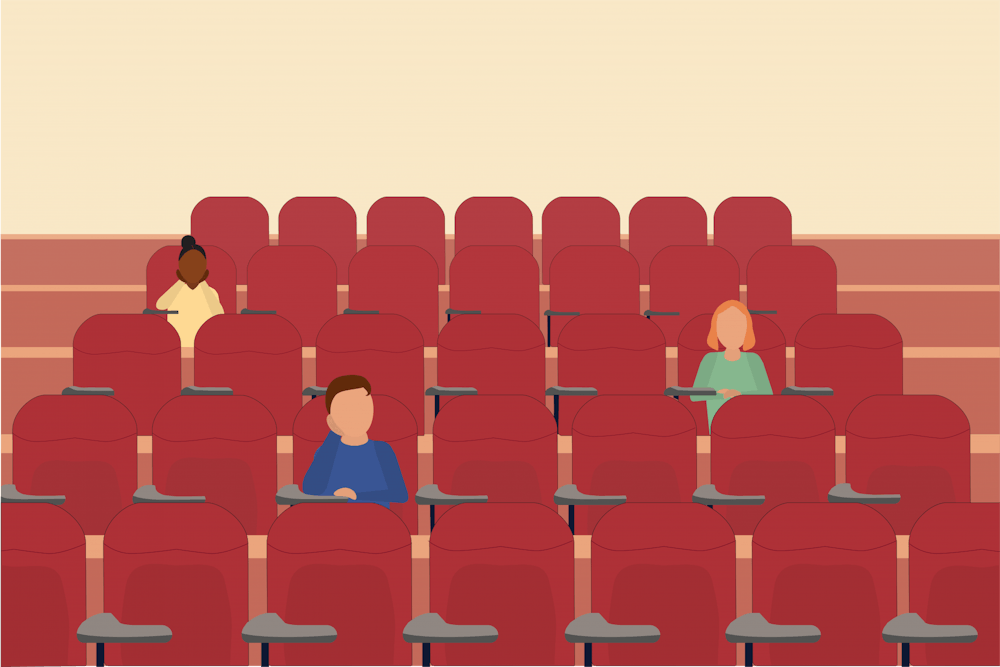The percentage of college-aged students actually pursuing a college degree is on the decline across the United States, creating questions about the value of higher education that colleges, including the University of South Carolina, must adapt to.
A Vox article titled “The incredible shrinking future of college” sparked conversation not only about the mere demographic decline in college-aged students, but also the need for and purpose of higher education.
According to Chas Thompson, a clinical assistant professor in USC’s Educational Leadership and Policies department of the College of Education, this decline isn’t new and is bound to continue.
“Since fall 2011, we’ve lost more than three million students, or about 17% of our overall student population,” Thompson said.
In 2020, the Education Data Initiative found a 3.29% decline year-over-year in enrolled postsecondary students in America, which the group characterized as the sharpest decline in enrollment since 1951.
Rusty Monhollon, the president and executive director of the South Carolina Commission on Higher Education, distinguishes between an enrollment cliff, which is a demographic phenomenon, and a decline, which is the result several socioeconomic factors — though both are occurring in this case.
While experts like Monhollon contend that, demographically, the Great Recession of 2008 has contributed to the enrollment cliff, other factors have played into the overall decline in young adults pursuing traditional higher education.
Samantha Moser, a Ph.D. candidate in sociology at USC, believes college-aged individuals are starting to analyze the costs and benefits of an investment as large as college.
“People are starting to see that maybe the college degree isn’t the only way that you can get the white picket fence and all that kind of stuff,” Moser said.

Moser also emphasized the pandemic’s effect on college-aged people, inspiring more to pursue non-traditional paths. Additionally, the 2019 celebrity college admissions scandal boosted the theory of distrust in higher education institutions as a contributing factor to the decline, according to Thompson.
“This idea of public distrust — and to an extent, public dissatisfaction with higher education — has kind of also fed into this shift of declining populations,” Thompson said.
Despite the predominant enrollment decline nationally, experts believe the effect on the South, and specifically South Carolina, is less significant.
“I’ve always thought that what we’re going to have in South Carolina is not an enrollment cliff as much as an enrollment plateau,” Monhollon said.
Monhollon attributes the attractiveness of South Carolina as a college destination and its general enrollment stability to new trends in business that have brought jobs to the region. He also cites the state's large military presence as a provider for a "steady, consistent stream of young families that help keep the numbers a little more stable."
USC's overall student population has only steadily increased over the last decade, growing from 31,965 in October 2013 to 35,590 last fall.
Elizabeth Orehovec, the executive director of undergraduate admissions and assistant vice president for enrollment management at USC, is not concerned about the effects of the decline on the university.
“I think the University of South Carolina is in a strong position in the higher education landscape because of our national reputation and our academic programs, our brand, our alumni base,” Orehovec said.
While South Carolina and USC may be less affected by the decline, a shift in the way students experience college and the way institutions function is on the way. Moser anticipates that students will adopt new expectations as a result of the decline.
“I think overall also, because there will be fewer students, that there’s the possibility that students are going to expect a certain level, expect more out of their college experience,” Moser said.
Kristin Brooks, the College Completion Program manager for the South Carolina Commission on Higher Education, and Thompson disagree about the decline’s effect on the quality of the classroom environment and learning experience. Thompson sees a potential disproportionate effect on minority students who may face underrepresentation in a declining college population.
“I think that just naturally, that leads to a difference in understanding because students aren’t learning from and learning with people who are different from them,” Thompson said.
On the other hand, Brooks highlighted the diversity of age and life experience in college classrooms that may result from the decline of traditional college-aged students on campuses.
“You have multiple generations in one classroom providing perspectives and learning together, which I think can be incredibly powerful for education,” Brooks said.
However, Thompson and Monhollon agree that this decline should inspire higher education institutions to reassess their goals and ask important questions about their function.
“What is the purpose of higher education, what role do we serve in society and how do we meet that goal?" Thompson said. "It’s important for us to be good stewards of our community.”
Monhollon emphasized the importance of universities providing metaphorical “on ramps and off ramps” to allow individuals to pursue the acquisition of skills and learning throughout their lives.
“I really believe in lifelong learning," Monhollon said. "I think that’s going to be one of the waves of the future.”

